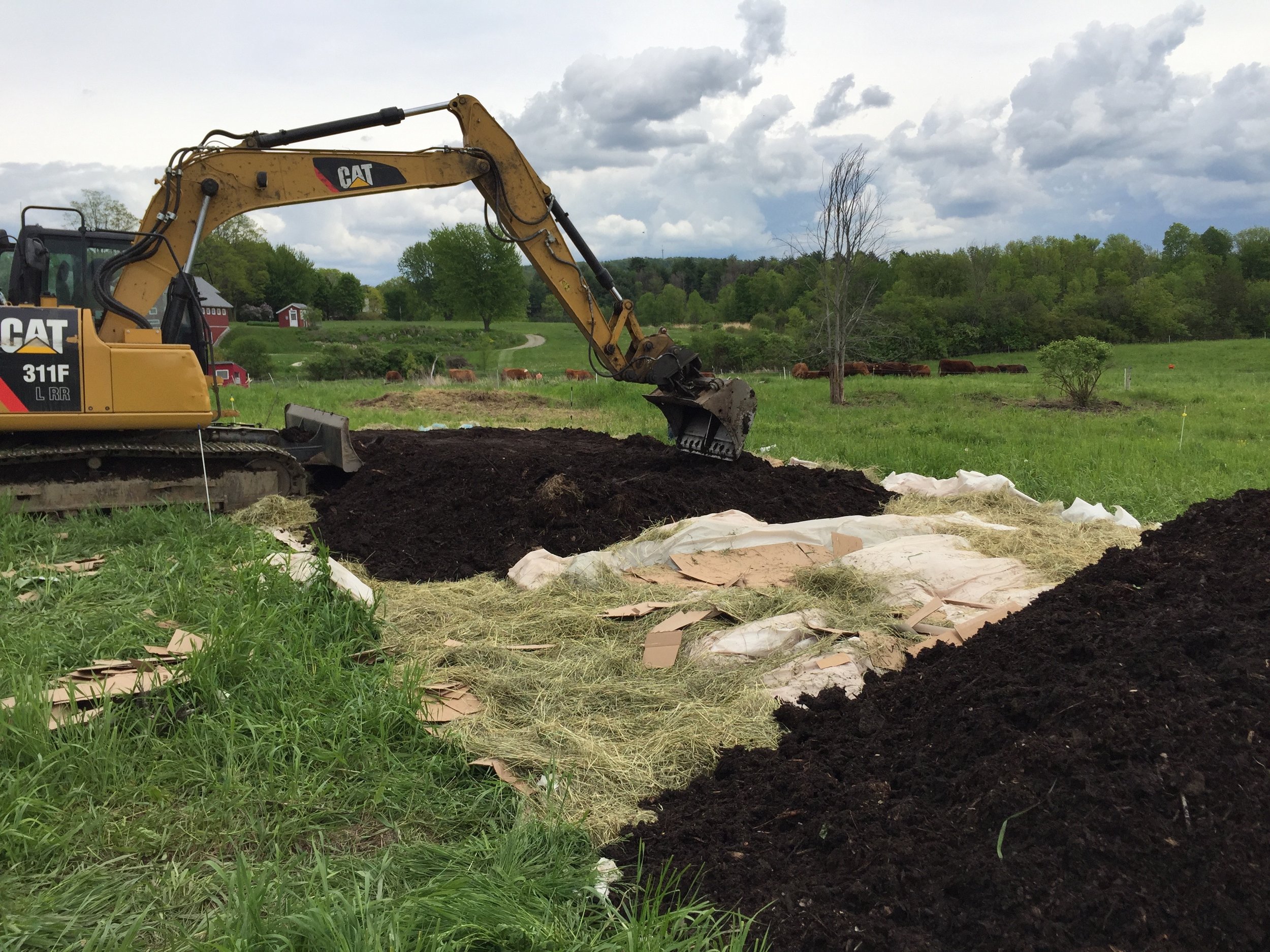
Re-Habitating Our Landscape
Our working landscape is at the heart of who, what, and why we are. At heart, we are ecological orchestrators that work with our plants and animals to serve our community with place-based nutrition, health, and experience that illuminates and connects us all to the vibrancy and abundance of our home. Through this service, we are re-learning our relationship to our habitat, which we shape every day alongside the plants, animals, and microorganisms who share their home with us.
Our husbandry and cultivation practices follow place-based circadian and seasonal rhythms. These patterns are informed by our local weather, soils, and organisms. We join this practice in awareness with ecological and evolutionary biological science in order to advance artful and profitable relationships amongst the animals and plants we care for.
A proliferation of symphylans in our hoophouses threatened to stunt crop growth teaching us a lesson in soil ecology that we must provide better habitat for indigenous fungi to keep the symphylan population in balance. We now grow fungi habitat in our vegetable and tree crop gardens through no-dig sheet mulching systems with nutrient-dense woodchip compost. This practice not only balances our garden soil ecology, but also grows 8 inches of new nutritionally-balanced topsoil and reduces gardening labor in planting, watering, weeding, and harvesting.
We study the landscape-scale mob migrations of herbivore ancestors whose patterns of movement and disturbance grew the most verdant, deep-soiled grasslands and savannas on Earth. We attempt to mimic these habits and habitats on our small scale by “mob grazing” our herbivore cattle at high-density and constant movement to regenerate our own grasslands and savannas. In 8 years of intense grazing practices we have experienced a 400% improvement (and still increasing!) in plant productivity.
We appreciate that ecosystem functions and wildlife habitats require landscape-scale regeneration, spurring us to expand our land base and partner with local land owners, managers, and stewards to restore increasingly larger habitat blocks and corridors. While we only own 143 acres, we collectively steward a growing land base of over 750 contiguous conserved or ecologically managed acres together with the University of Vermont, Nature Conservancy, Vermont Land Trust, The City of South Burlington, and neighbors.


